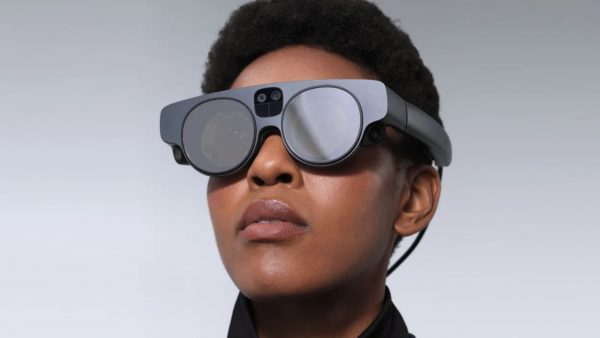What are the New Features in the Magic Leap 2 Mixed Reality Headset?
The Magic Leap 2 augmented reality headset finally made its commercial debut last week. Priced at a steep $3,299, the headset mainly targets the commercial or enterprise market segment.
This next-generation augmented reality headset is packed with an impressive array of features that you will definitely not find in consumer-grade augmented reality headsets.

The Magic Leap 2 offers considerable improvements over its predecessor, the MagicLeap1, which flopped commercially. The company says the headset is the “smallest and lightest” AR device. Unlike the original Magic Leap which also targeted the consumer market, the Magic Leap 2 has been developed for commercial use.
It is 50% smaller in volume and 20% lighter than its predecessor. Miniaturization of XR hardware makes a huge difference in consumer preferences. Consumers like them smaller and lighter since they expect to wear them over an extended period of time.
Magic Leap 2 also provides the largest field of view (FOV) for an augmented reality headset. It has a diagonal field of view of 70 degrees. The Meta Quest 2 headset, a VR headset with mixed reality passthrough functionality, has a field of view of 90 degrees.
The Magic Leap 2 headset also has a functionality called Dynamic Dimming. This enables it to be used even in brightly-lit environments. Dynamic Dimming also results in better image quality and allows for excellent text legibility, a huge advantage over similar devices.
The headset also supports Magic Leap’s open platform.
Magic Leao 2 comes in a consumer-level ‘Base Edition’, an ‘Enterprise’ edition, and a ‘Developer Pro’ edition.
Even though the Base Edition is classified as consumer-level, it costs $3,299 which will scare off average consumers. However, its impressive AR features may also attract AR enthusiasts and premium buyers with deep pockets willing to splurge on a high-end AR device. The Developer Pro headset is priced at $4,099 while the Enterprise Edition is priced at $4,999.
The market for augmented reality and virtual reality is growing rapidly and many developers are increasingly pushing the limits of the technologies to create more dazzling immersive experiences. For many, the limitations of the hardware are a bottleneck in the range of experiences that they can create. However, as hardware advances continue, we will soon have augmented reality interactions that do not necessarily require the user to wear headsets or glasses to interact with these experiences. The Walt Disney Company, for instance, is developing AR Rides for Disney parks that do not need 3D glasses to interact with.
https://virtualrealitytimes.com/2022/10/09/what-are-the-new-features-in-the-magic-leap-2-mixed-reality-headset/https://virtualrealitytimes.com/wp-content/uploads/2022/10/Magic-Leap-2-Headset-600x338.jpghttps://virtualrealitytimes.com/wp-content/uploads/2022/10/Magic-Leap-2-Headset-150x90.jpgAugmented RealityTechnologyThe Magic Leap 2 augmented reality headset finally made its commercial debut last week. Priced at a steep $3,299, the headset mainly targets the commercial or enterprise market segment. This next-generation augmented reality headset is packed with an impressive array of features that you will definitely not find in consumer-grade...Rob GrantRob Grant[email protected]AuthorVirtual Reality Times - Metaverse & VR
